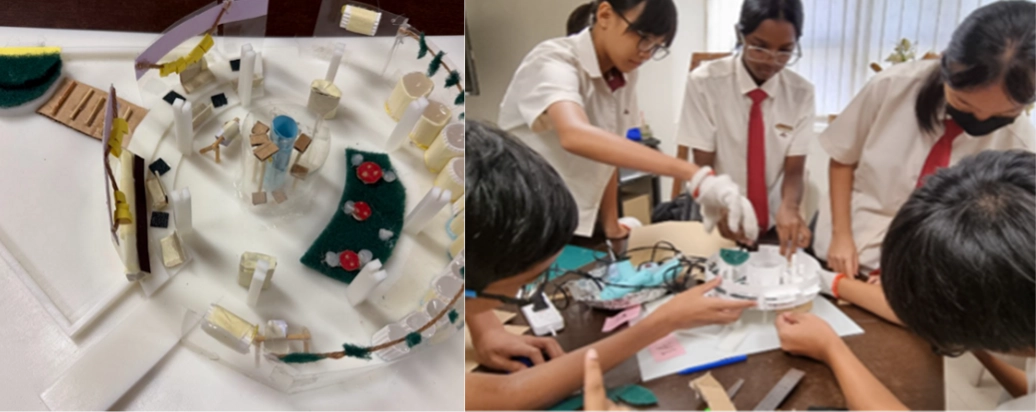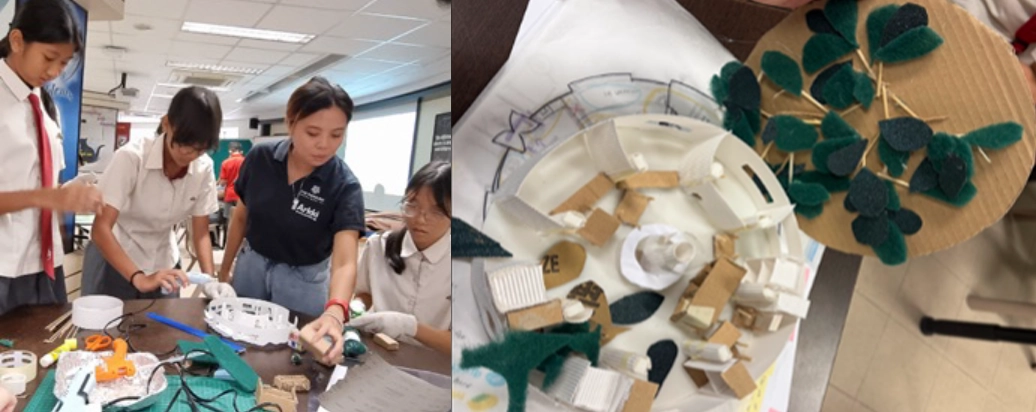
Design Your Own School
Students at the Drawing Board
What happens when you ask students to be the architects of their own learning space? The results are far more than just new furniture and fresh paint.
In Singapore, a quiet revolution in education is underway where students and teachers are being invited to co-create the very spaces they learn in – from classrooms to libraries and entire school plazas.
Teenagers at Bukit Batok Secondary School re-imagined their 39-year-old library and plaza, while younger peers at Jurong’s Xingnan Primary School transformed a classroom. Both sets of students went on immersive design-thinking journeys with The Possible Class to dream up vibrant, sustainable spaces that foster purpose and pride.
“They were projects for students by students, backed by professional design experts,” said Sim Shoo Shyuan, founder of The Possible Class, a Singapore-based education studio that uses architecture and design for deep learning. “They’re shaping areas for how they want to learn, play, and grow. It also gives them a bit of the bragging as their creative hallmarks stand the test of time.”
At Bukit Batok, 14-year-old students reimagined their library and student plaza with eco-friendly designs that integrated a school heritage gallery, biophilia study pods, earth-themed library and boardwalk. This connected history and nature to the everyday learning spaces. They reclaimed under-utilised areas to create open, adaptable spaces to support collaboration, performances and quiet reflection.


Adding some fun, they envisaged library bookshelves with secret doors leading to a hidden classroom.
“The students were able to consider not just their own needs, but the teachers’ needs,” said Ng Boon Chong, Bukit Batok Secondary School’s Head of Applied Learning who led the project. “They surprised me by showing all the 21st century competencies that the MOE is preaching. Throughout the whole process, I can see them being better communicators, more critical thinkers and close collaborators. I am super happy.”
The Possible Class’s coaches are architecture or interior design professionals turned educators. They first guide school leaders and teachers through design thinking techniques to shape frameworks for the projects. School educators then journey alongside students, offering feedback and playing the role of real-world clients, reinforcing empathy and creative problem-solving.
“It’s a learning journey that is so transformative,” added Ng. “Not many schools or students have the opportunity to do so through this real authentic experience.”
The school aims to implement the students’ designs by 2026.

Across town at Xingnan Primary, 11-12 year-olds began with wild sketches of a dream classroom. They then refined their concepts, focusing on how the space could support sustainability practices, while encouraging creativity, focus and connection.
The students don’t just design – they discover their voices and see their ideas come to life.
The Possible Class’s coaches, who are professional architects and interior designers turned educators, refined the students’ 3D models into detailed drawings the schools can then use in renovation tenders for contractors.
The Xingnan project was made possible with support from Hong Leong Asia, a leading provider of building materials and powertrains for the construction industry. Other Singapore schools are now planning to follow Bukit Batok and Xingnan’s pioneering lead.
This approach touches on themes that are top-of-mind in education today: future-ready competencies, student agency, and authentic real-world learning. More schools are lining up to do the same, and this is only the beginning.
